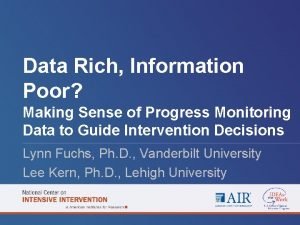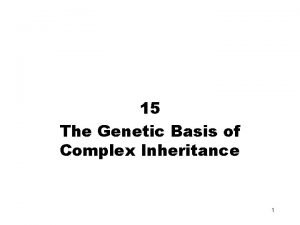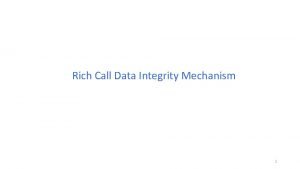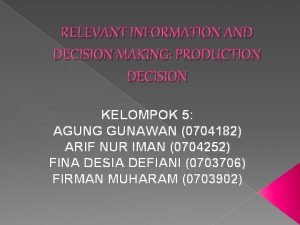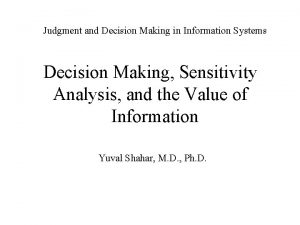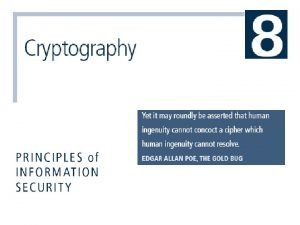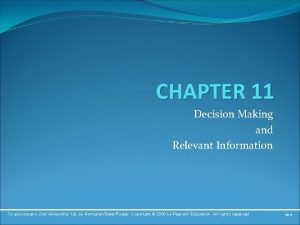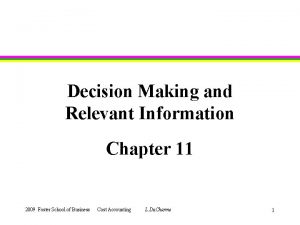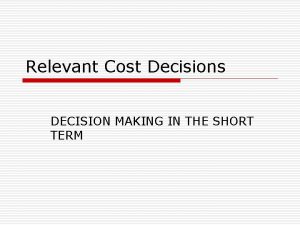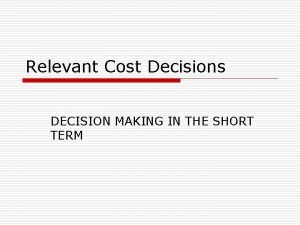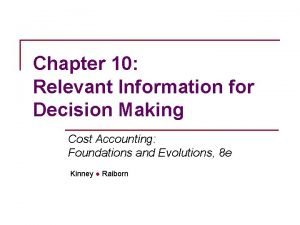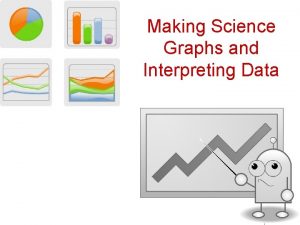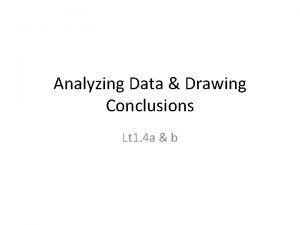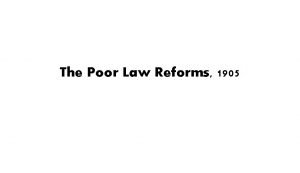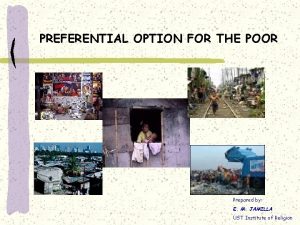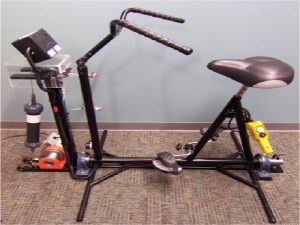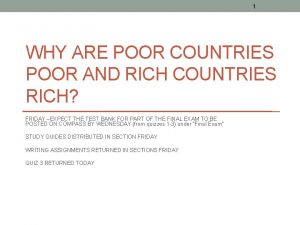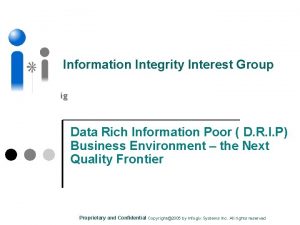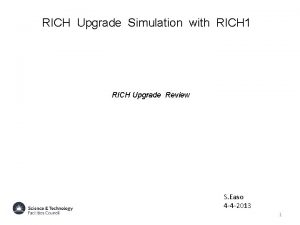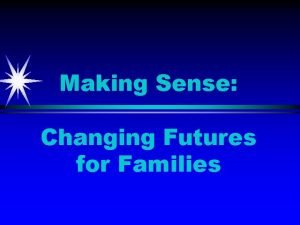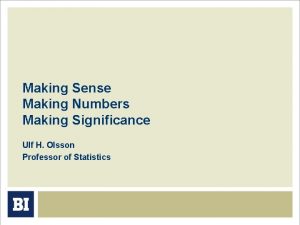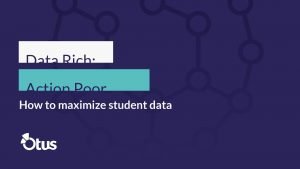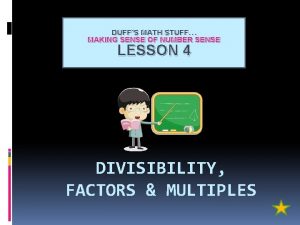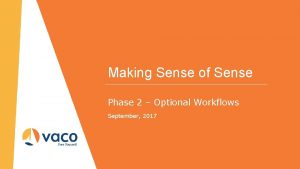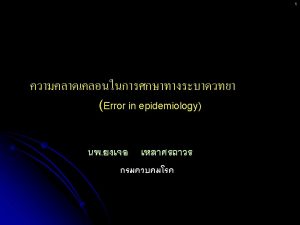Data Rich Information Poor Making Sense of Progress









































- Slides: 41

Data Rich, Information Poor? Making Sense of Progress Monitoring Data to Guide Intervention Decisions Lynn Fuchs, Ph. D. , Vanderbilt University Lee Kern, Ph. D. , Lehigh University

Purpose Help educators understand how to review progress monitoring and other accessible data to guide intervention planning for students with intensive needs in behavior and academics. 2

We will discuss 1. Common progress monitoring measures in academics and behavior 2. Key considerations for optimizing data collection 3. Structured questioning for analyzing progress monitoring data patterns: – What patterns do the data reveal? – What might the data reveal about the student’s needs? – What adaptations may be needed to make the intervention more effective? 3

1. Common Progress Monitoring Measures in Academics and Behavior 4

Quick Review: What is progress monitoring? § A standardized method of ongoing assessment that allows you to • Measure student response to instruction/intervention • Evaluate growth and facilitate instructional planning § For more information about progress monitoring: • www. intensiveintervention. org; www. rti 4 success. org – Tools – Charts – Training modules 5

Why Implement Progress Monitoring? Compare the efficacy of different forms of instruction. Estimate the rates of improvement (ROI) over time and set goals. Data allow us to Identify students who are not demonstrating adequate progress. Determine when an instructional change is needed and help to hypothesize potential sources of need. 6

Progress Monitoring Tools Should Be ü Brief assessments ü Repeated measures that capture student learning or behavior over time ü Measures of grade, age, or instructionally appropriate outcomes ü Reliable and valid 7

Common Progress Monitoring Measures: Academics Reading § Letter Sound Fluency § Word Identification Fluency § Oral Reading Fluency; Passage Reading Fluency § Maze Mathematics § Number Identification § Quantity Discrimination § Missing Number § Computation Curriculum. Based Measures § Concepts and Applications Curriculum. Based Measures 8

Common Progress Monitoring Measures: Behavior Systematic Direct Observation Direct Behavior Rating 9

Common Progress Monitoring Measures: Behavior Event-Based Systematic Direct Observation • Frequency • Duration • Latency Time-Based • Wholeinterval • Partialinterval • Momentary time sampling 10 10

Common Progress Monitoring Measures: Behavior Direct Behavior Rating M Tu W Th F 11

Graphing Progress Monitoring Data Disruptive Place a mark along the line that best reflects the percentage of total time the student was disruptive during mathematics today. Interpretation: The student displayed disruptive behavior during 30 percent of small-group science instruction today. 12

2. Key Considerations for Optimizing Data Collection 13

Common Challenges: Academic Data § Aligning measure to content of instruction § Sensitivity to change § Distinguishing from other classroom-based and diagnostic assessments § Frequency of data collection 14

Common Challenges: Behavior Data § Defining target behavior § Aligning measure with target behavior § Consistency of administration and frequency of data collection 15

3. Structured Questioning for Analyzing Progress Monitoring Data Patterns 16

What can a graph tell you? 17

Use Structured Questioning to Arrive at a Hypothesis Data and assessment Dosage and fidelity Content and intensity 18

Structured Questioning Data and assessment Dosage and fidelity Content and intensity • Am I collecting data often enough? • Is the progress monitoring tool sensitive to change? • Does the measure align to the content of the intervention? • Am I collecting data at the right level? I 19

Structured Questioning Data and assessment Dosage and fidelity Content and intensity • Did the student receive the right dosage of the intervention? • Did the student receive all components of the intervention, as planned? • Did other factors prevent the student from receiving the intervention as planned? (Example: absences, behavior issues, scheduling challenges, group size, staff training) I 20

Structured Questioning Data and assessment Dosage and fidelity Content and intensity • Is the intervention an appropriate match given the student’s skill deficits or target behavior? • Is the intensity of the intervention appropriate, given the student’s level of need, or are adaptations or intensifications needed? • Are academic and behavioral issues interrelated? I 21

Trend: Improvement in Scores After Change (Behavior) Pre-intervention After intervention change The situation: Responding improves more after an intervention change, with an ascending trend. 22

Trend: Improvement in Scores After Change (Academic) The situation: Scores improve more after an intervention change, making the trend line steeper than it was. 23

What could this pattern be telling you? § This is good news! § The student is steadily improving and is on target to reach the end of year goal. § Continue to monitor progress to ensure ongoing improvement. § Consider creating a more ambitious goal if the student continues to outperform the goal. 24

Trend: Flat Line (Behavior) Pre-intervention After intervention change The situation: The data from the intervention phase is similar to preintervention or baseline, creating a flat or stable trend. 25

Trend: Flat Line (Academic) The situation: Data in the intervention phase is similar to the baseline phase, creating a flat trend line. 26

What could this pattern be telling you? § The student is not responding to the intervention. § The progress monitoring tool is not appropriate. § The student has not received the intervention with fidelity. § The intervention is not an appropriate match for the student’s needs. 27

Data and assessment Dosage and fidelity Content and intensity • • Select progress monitoring measure that aligns with intervention. • Ensure progress monitoring tool is sensitive to change. • Ensure the behavior measurement reflects the behavior you need to change. • • Address barriers to adequate dosage and fidelity. • • Target specific student need or function of behavior and determine more appropriate match. Add motivational or behavioral component. Add academic supports. Modify schedules of reinforcement. 28

Disruptive DBR Rating Trend: Highly Variable (Behavior) 10 9 8 7 6 5 4 3 2 1 0 Pre-intervention After intervention change The situation: The data from the intervention phase is similar to preintervention or baseline, creating a variable trend. 1 2 3 3 5 6 7 8 9 10111213141516 Number of School Days 29

Trend: Highly Variable (Academic) The situation: Scores are highly variable, with significant changes from day to day. 30

What could this pattern be telling you? § The progress monitoring tool is not reliable. § Administration of the assessment is inconsistent. § Engagement and motivation vary greatly by day. § Other situational or external factors affect performance or behavior. 31

Data and assessment • Verify that progress monitoring tool has evidence of reliability. • Ensure consistency of administration. Dosage and fidelity • Ensure consistency of intervention delivery and dosage. Content and intensity • Create plan to help student manage situational factors. • Add motivational or behavioral component. 32

Engagement DBR Rating Trend: Slow Rate of Improvement (Behavior) 10 8 Pre-intervention After intervention change 6 4 2 0 1 2 3 The situation: The data in the intervention phase is increasing but slowly, creating a gradual ascending trend. 4 5 6 7 8 9 10 11 12 Number of School Days 33

Trend: Slow Rate of Improvement (Academic) The situation: The student’s scores are improving, but not as steeply as the goal line. 34

What could this pattern be telling you? § The student is making some progress, but at a slow rate. § Continuation will not result in student reaching goal. § The goal is inappropriate for the measure being used or student characteristics. § The student requires an intervention change to increase intensity. 35

Data and assessment • Set feasible goal by researching rate of improvement. Dosage and fidelity • Increase intensity by increasing frequency or duration of intervention or decreasing group size. Content and intensity Increase intensity by • Providing more frequent opportunities for feedback • Adding explicit instruction in skill deficit area • Adding practice opportunities 36

In Summary • Begin with a valid, reliable, and appropriate progress monitoring measure. • Graph your data to see patterns. • Ask questions about data patterns to arrive at hypothesis about student responsiveness. • Use your hypothesis to inform changes to intervention or assessment (if the data indicate that a change is needed). 37

Additional Resources § Center on Response to Intervention: www. rti 4 success. org § National Center on Intensive Intervention, DBI Training Series: http: //www. intensiveintervention. org/content/dbitraining-series § National Center on Student Progress Monitoring: http: //www. studentprogress. org/ 38

Questions and Discussion 39

National Center on Intensive Intervention (NCII) E-Mail: NCII@air. org 1050 Thomas Jefferson Street, NW Washington, DC 20007 - 3835 Website: www. intensiveintervention. org While permission to redistribute this webinar is not necessary, the citation should be: National Center on Intensive Intervention. (2014). Data Rich, Information Poor? Making Sense of Progress Monitoring Data to Guide Intervention Decisions. Washington, DC: U. S. Department of Education, Office of Special Education Programs, National Center on Intensive Intervention. 40

National Center on Intensive Intervention This webinar was produced under the U. S. Department of Education, Office of Special Education Programs, Award No. H 326 Q 110005. Celia Rosenquist serves as the project officer. The views expressed herein do not necessarily represent the positions or policies of the U. S. Department of Education. No official endorsement by the U. S. Department of Education of any product, commodity, service or enterprise mentioned in this presentation is intended or should be inferred.
 Data rich information poor
Data rich information poor Physical progress and financial progress
Physical progress and financial progress Rostow stages
Rostow stages Poor students rich teaching
Poor students rich teaching Why are some countries rich and others poor
Why are some countries rich and others poor Rich tudor drinks
Rich tudor drinks Rich and poor peter singer
Rich and poor peter singer Poor tudor house
Poor tudor house Rich dad poor dad balance sheet
Rich dad poor dad balance sheet Poor vs rich
Poor vs rich Tudor rich and poor
Tudor rich and poor Byzantine empire vs roman empire venn diagram
Byzantine empire vs roman empire venn diagram Tudor rich and poor
Tudor rich and poor Tudor food for kids
Tudor food for kids Rich man poor man bible
Rich man poor man bible Narrow sense heritability vs broad sense heritability
Narrow sense heritability vs broad sense heritability Narrow sense heritability vs broad sense heritability
Narrow sense heritability vs broad sense heritability Making sense of discourse
Making sense of discourse What is inferring
What is inferring War making and state making as organized crime summary
War making and state making as organized crime summary Rich call data
Rich call data Qlik sense data model best practices
Qlik sense data model best practices Decision making and relevant information
Decision making and relevant information Five step decision making process
Five step decision making process Value of information in decision making
Value of information in decision making Cryptovariable
Cryptovariable How do information systems aid in decision making
How do information systems aid in decision making Chapter 11 decision making and relevant information
Chapter 11 decision making and relevant information Chapter 11 decision making and relevant information
Chapter 11 decision making and relevant information Decision making and relevant information
Decision making and relevant information Decision making and relevant information
Decision making and relevant information Decision making and relevant information
Decision making and relevant information Relevant information for decision making
Relevant information for decision making Making science graphs and interpreting data
Making science graphs and interpreting data Greg linden
Greg linden Analyzing and drawing conclusions
Analyzing and drawing conclusions Excellent very good good fair poor scale
Excellent very good good fair poor scale Poor law commission 1905
Poor law commission 1905 Thought content descriptors
Thought content descriptors Steps of remedial teaching
Steps of remedial teaching Hoover's poor farm tobacco fund
Hoover's poor farm tobacco fund Preferential option for the poor infographic
Preferential option for the poor infographic
